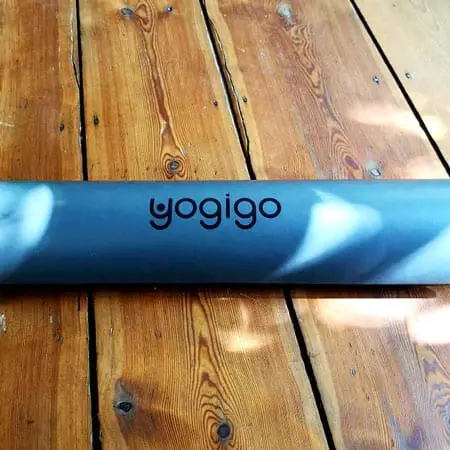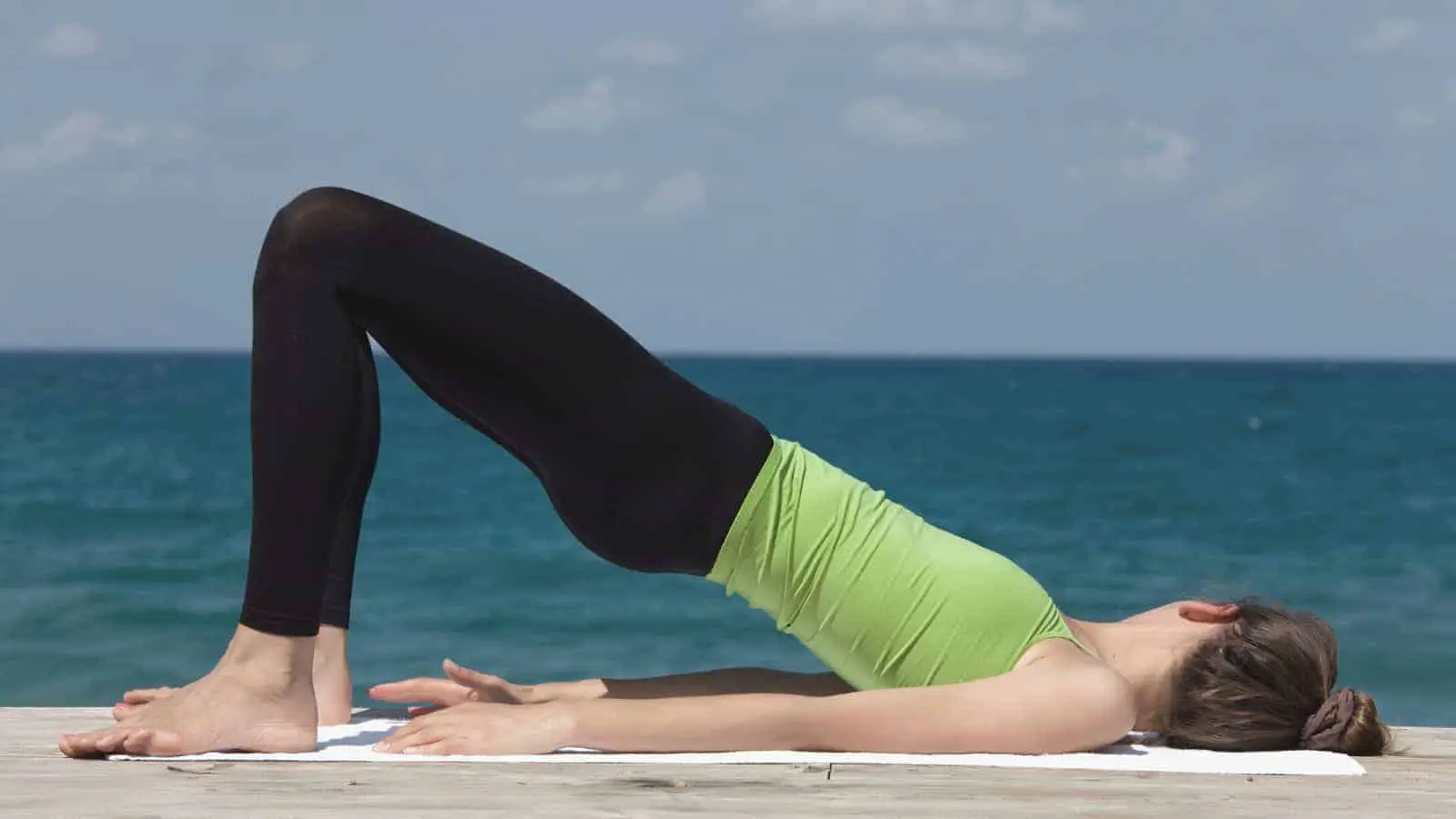Each yogi’s practice is different, and it is essential to understand what props and supports you need to improve your experience. Mats are the most widespread option to practice yoga, but other popular options include towels and rugs. But can you use them without a mat and still make the most of your practice?
You can use a yoga towel without a mat, but it provides less padding for your knees, hips, and back. Yoga towels with silicone dots increase grip, but they might not be suitable for balancing poses or inversions. Yoga towels without silicone dots are only ideal for use on grass or sand.
The most important thing you can do as an aspiring (or skilled) yogi is to learn more about your props. Find out whether you can use a yoga towel without a mat and the benefits of this choice below!
Using a Yoga Towel Without a Mat: All You Need To Know

Undeniably, yoga mats are the most common choice for yogis to practice their asanas (postures) or flows. Mats are a great alternative to enjoy extra padding for the back, knees, hips, and joints, making most asanas more comfortable and easier to perform for longer.
Today, you can find a wide range of yoga mats on the market that can fit any need for padding, sustainability, and anti-slip requirements. However, mats have not always been the leading choice for yogis as they have not been around for long!
The first rudimentary yoga mats — called “sticky mats” — were created by yoga teacher Angela Farmer, who was looking for a material that could provide grip and padding. However, before that, yogis would practice on rugs, bare floors, grass, or sand.
Yogic practices have been around for over 4000 years and, while all the main principles of this practice are still intact, it has been developing over time. In the beginning, it only comprised meditative practices and breathing exercises, for which a mat was not necessary. During these times, the use of animal skin or rugs was standard practice.
When a more physical element was added, yogis need a more supportive surface to practice their asanas. However, when the first PVC mats entered the market, their flows became obvious. Indeed, mats would break down quickly due to constant use, they might not be so hygienic, and they could be slippery due to sweat.
That’s when yoga towels became handy! Yoga towels, which are usually made of microfiber materials, are non-slip, easy to wash, and can be packed in a yoga bag easily. Many yogis have started to place a yoga towel on top of their mats to increase hygiene and enjoy a non-slip, soft material on their skin when practicing.
For certain types of yoga classes, such as Hatha, Vinyasa, Bikram, and Hot Yoga, where you are likely to sweat more, yoga towels can even increase your practice’s safety.
However, it is possible to discard the mat and practice directly on your yoga towel with the proper precautions. Learn more below.
Benefits of Using a Yoga Towel Without a Mat
As yoga towels increased in popularity, many yogis have considered ditching the mat. Undoubtedly, this choice has some benefits and drawbacks, and it might not be the most suitable option for all practitioners.
Here are the benefits worth taking note of:
You Can Feel More Grounded During Your Practice
One of the most significant benefits of using only a yoga towel without the mat is building a stronger connection with the ground. As there’s less thickness between you and the earth, you can enjoy a free, unrestricted flow of energy.
Additionally, if you practice grounding exercises through your hands and feet, using just a yoga towel can increase the sensations you experience on your soles, palms, fingers, toes.
Meditative or resting poses such as Baddha Konasana (Bound Angle Pose), Padmasana (Lotus Pose), and Bālāsana (Child’s Pose) will also benefit from your ground connection.
Yoga Towels Are Easy To Clean and Carry
If you travel a lot and see your mat as a burden, you can consider using a yoga towel instead. These towels are easier to roll and store away in a simple mesh bag, and they can fit any suitcase or backpack.
This characteristic makes them suitable if you love to practice outdoors and always have a towel with you. Once you master yoga on a towel, you are free to enjoy your morning or evening flow everywhere!
Yoga Towels Increase Grip
Yoga towels are activated by sweat or moisture, and they can add an extra layer of support when practicing yoga. Indeed, if you practice fast-paced flows — such as Vinyasa — and you tend to sweat, yoga towels provide more grip instead of turning into a wet and slippery surface.
Drawbacks of Using a Yoga Towel Without a Mat
While there are noticeable benefits, there are also some drawbacks to think about. As we have seen, it is possible to practice yoga without a mat, but it might trigger a learning curve for any yogi.
These are downsides you might encounter along the way:
Mats Add Some Cushioning
Practicing specific asanas on just a yoga towel can be uncomfortable – especially if your joints and hips are particularly sensitive. In this case, the extra padding that mats might provide can make them a more comfortable choice.
They Are Only Suitable for Certain Surfaces
Using only a towel on hard surfaces — such as a wooden floor or tiles — can make it challenging for you to work on alignment and balance. Additionally, towels can be extremely slippery and make more complicated balancing poses and inversions dangerous.
Mats Provide Some Padding and Increase Safety
If you are working on inversions, balance poses, or more complex asanas, the supportive structure of a mat and the extra padding can help you avoid injuries. Also, a mat can help you avoid adding stress to your joints if you are placing your weight on delicate body structures such as the neck, wrists, or forearms.
How Do Different Types of Towels Perform Without a Mat?
So, now you know that you can use a towel without a mat for your yoga practice. In the video below, you can learn more about using a yoga towel with or without the mat:
However, the type of towel you opt for can make a difference in your experience, and picking the right one can significantly increase your level of comfort and safety during your practice.
Here are the best types:
Towels With Silicone Dots
Some microfiber towels come with silicone dots. These are the best types of towels for use without a mat because they provide extra grip and allow you to practice in most conditions.
However, these mats are still not suitable for inversions and complicated asanas as they don’t provide the support you need. Additionally, if you are using these mats on an even surface such as wood or tiles, you might find it too slippery.
Yoga Towels Without Silicone Dots
If you plan to use a yoga towel without silicone dots, make sure you are not using it without a yoga mat on a slippery surface. These kinds of towels are suitable if you crave protection between your body and soil, sand, or grass.
However, you should not use these towels alone on a wooden or tiled floor. Indeed, in this case, the towels can become incredibly slippery and make any yoga flow dangerous!
Hand Yoga Towels
The size of your yoga towel will also indicate if it’s a good idea to use with or without a mat. Hand yoga towels are designed to be placed just under your hands during asanas to provide extra grip and absorb moisture from the sweat.
You can use these towels without a mat outdoors — on sand or grass — to protect your hands from the rough surface underneath. However, you should not use them without a mat in a yoga studio where the floor can be wet.
Yoga Rugs
Yoga rugs are different from yoga towels. They are usually thicker and heavier, and they provide enough padding while offering a more natural sensation on the skin. Yoga rugs have been used for centuries, and they have been developed to meet today’s yogis’ non-slip and hygiene requirements.
Conclusion
Using a yoga towel without a mat is possible, but it might not provide the grip you need to perform some more challenging asanas safely. Indeed, a yoga towel — especially if it does not boast silicone dots — won’t create any friction with the flat surface underneath and increase the chance of injuries.
At the same time, you can use the towel outdoors on sandy or grassy surfaces, where the ground provides enough friction. In this case, you can enjoy a more connected and grounded experience.








